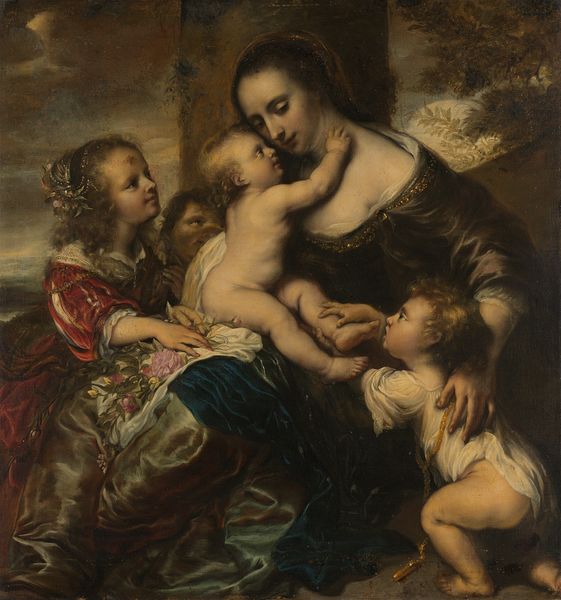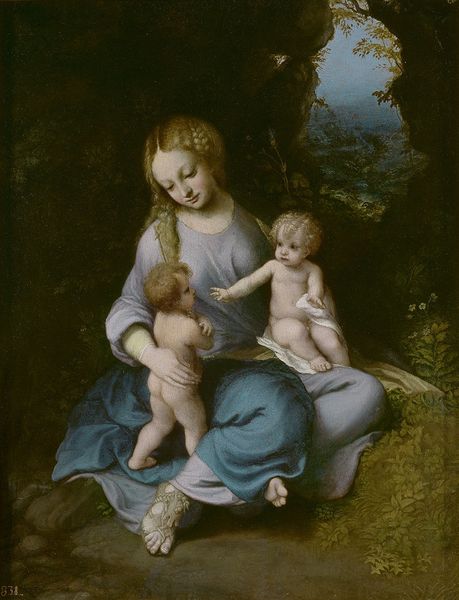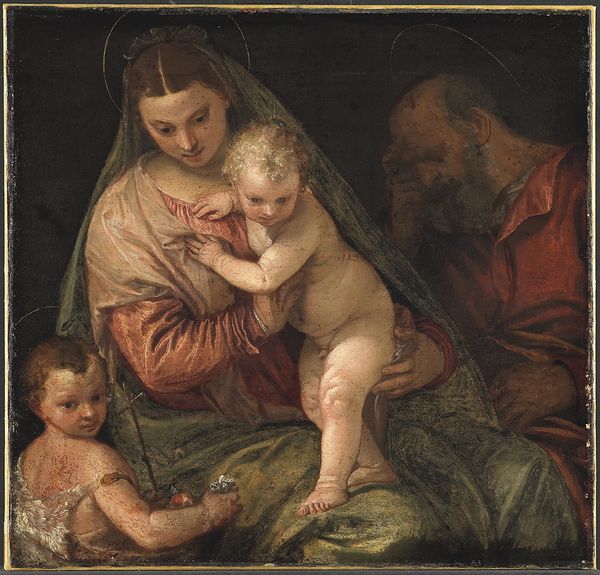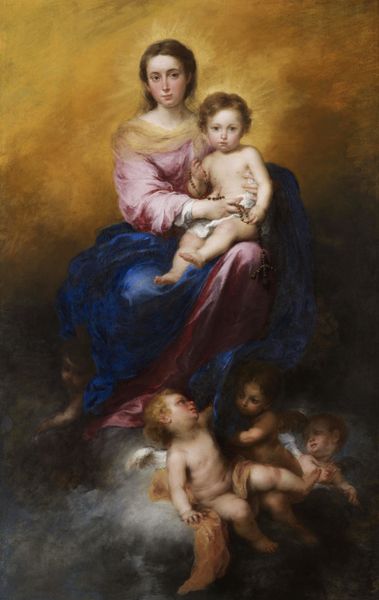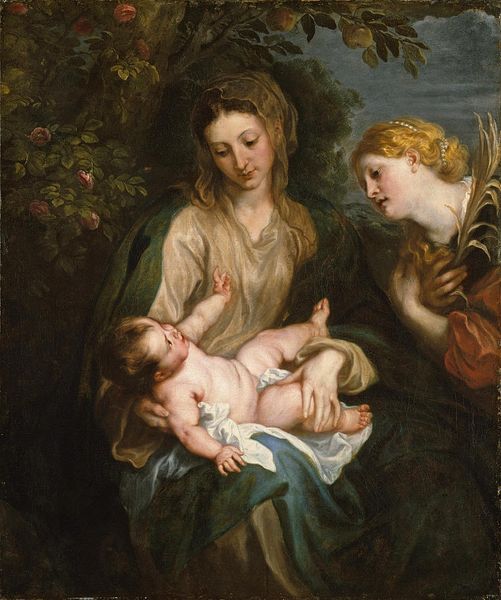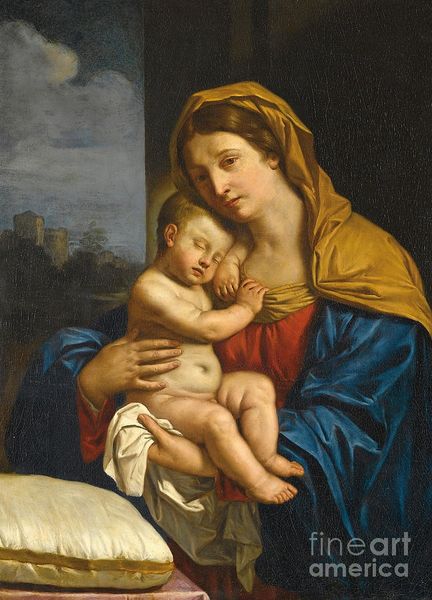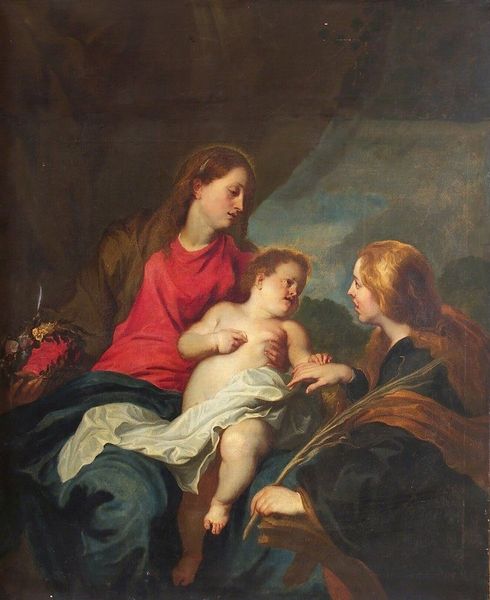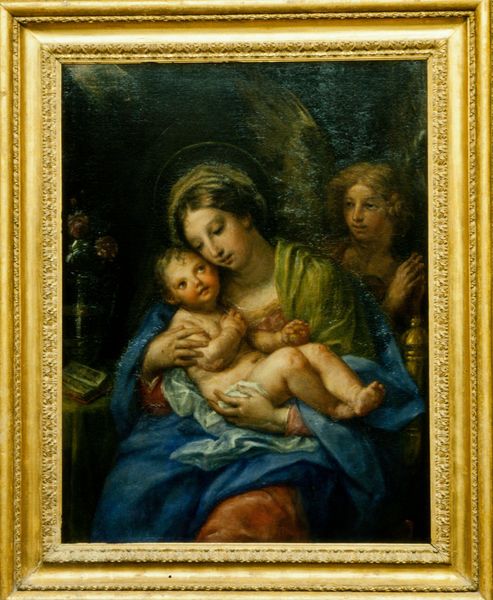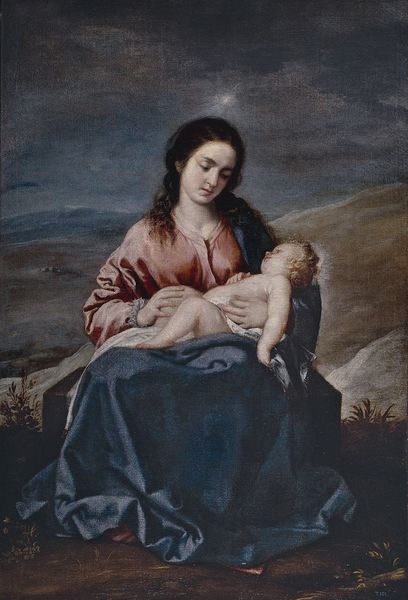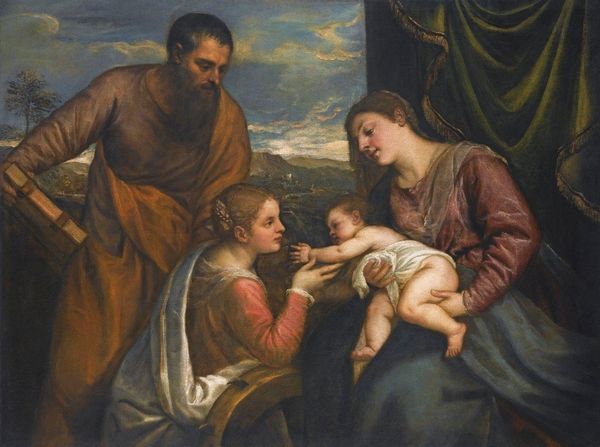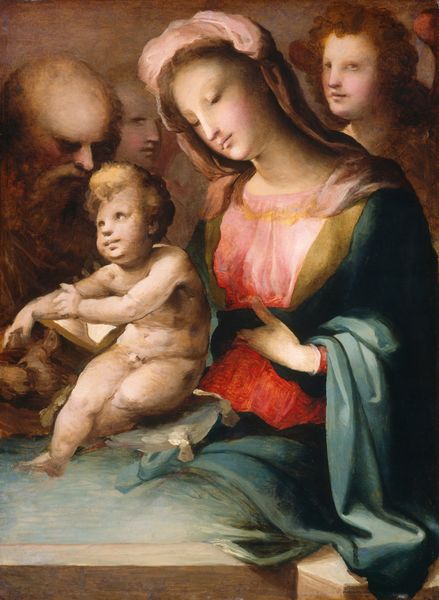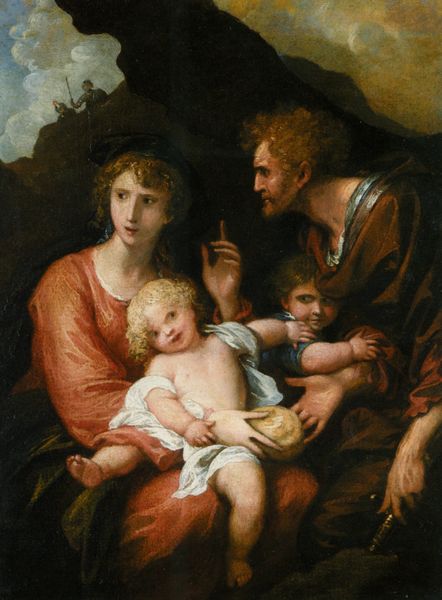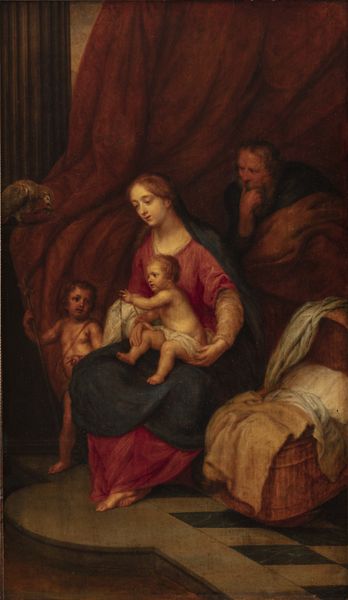
painting, oil-paint
#
portrait
#
allegory
#
baroque
#
painting
#
oil-paint
#
oil painting
#
history-painting
Dimensions: support height 97 cm, support width 75.3 cm, support depth 8 cm
Copyright: Rijks Museum: Open Domain
Curator: Ah, "The Holy Family with a Female Saint in Adoration," believed to be from the workshop of Anthony van Dyck, around 1630 to 1650. A compelling oil on canvas. What's your immediate take? Editor: My first impression is one of subdued drama. It feels almost theatrical, doesn't it? The muted palette lends an air of contemplative solemnity. Curator: It does play with contrasts masterfully. See how Van Dyck uses a tenebrist approach, emerging from darkness toward the figures to create an engaging experience. What elements do you observe? Editor: I'm struck by the composition. That gentle triangulation of gazes – Mary looking down at the female saint, the saint engaging the Christ Child… it creates a beautiful sense of interconnectedness, while the skull at the feet brings that sobering memento mori to mind, a reminder of mortality. A complex symbol. Curator: The placement of the skull, nestled in the foreground, disrupts what otherwise could be merely a religious allegory, bringing the temporal reality right to the doorstep of divinity, something tangible. Also notice the exquisite brushwork of the fabric, really embodying the opulence of Baroque aesthetics. Do you see that elsewhere? Editor: Indeed. The softness in rendering the Virgin’s face, the shimmering highlights… there's an intense focus on texture and light that adds a sensual dimension, juxtaposing strangely with the dark presence of Joseph. Curator: Speaking of Joseph, do you feel the same kind of life emanating from him? In my experience, Joseph remains secondary in composition but essential to the core significance, but here, to me, he’s rendered with a degree of remove that accentuates, maybe even aggrandizes the relationship of Mother and Child. I'm curious, is this just painting a holy scene, or constructing an aspirational relationship? Editor: It might be more than that. I think we see Van Dyck reflecting contemporary concerns of spirituality and familial duty. A reflection in paint! Curator: I see the pull of our own present meeting with this piece now, still eliciting conversation about these ideals that reverberate even centuries away. A timeless visual conversation.
Comments
No comments
Be the first to comment and join the conversation on the ultimate creative platform.
